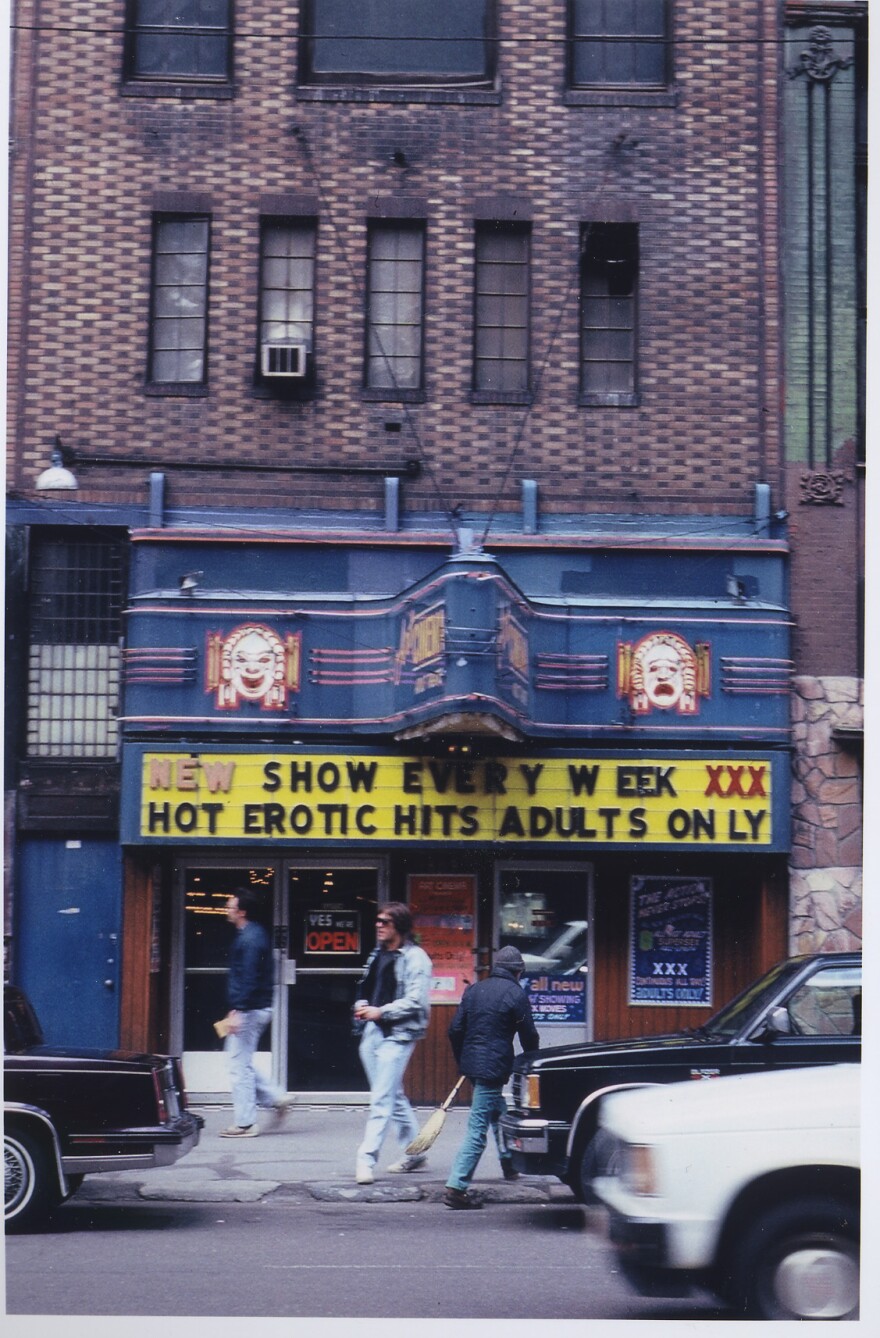Downtown Pittsburgh today is known, in part, for the entertainment it hosts. It's a place one can see Broadway shows, art galleries and music festivals, sometimes all in the same night. But in the not-so-distant past, a section of the city was home to a different type of entertainment.
90.5 WESA listener Michael Dittman, a writer and English professor from Butler County, was doing some research about Pittsburgh history a few years back.
"And at the same time I was reading aboutSan Francisco's Barbary Coast and different sort of seedy districts and I [wondered] where was Pittsburgh's?"
(Slide the toggle back and forth to compare the historical photo to present day.)
Jeff Izenson, the third generation owner of Specialty Luggage, says he was 13 years old when he started working at the family business in 1975. Back then, the store's current location at the intersection of Liberty and Seventh avenues was the heart of the Red Light District.
Izenson said Liberty Avenue used to be a smattering of restaurants and retail shops butting up against massage parlors, adult video stores and triple-X performance spaces.
"I had to deliver a trunk once to one of the dancers, I was probably about 15 years old and [the family] was like, 'you can take it,'" Izenson said. "I had to deliver it and it was really seedy, about as seedy as you can imagine."
This is part of our Good Question! series where we investigate what you've always wondered about Pittsburgh, its people and its culture.
Think lots of men sitting alone watching the dancers, said Izenson. In the 1970s and '80s, Liberty Avenue was packed with places like that. The Harris Theater used to be known as the "Art Cinema," the site of triple-X movie showings. The parklet at Seventh Avenue and Penn Avenue was the home of "Doc Johnson's International House of Love Potions and Marital Aids," and SPACE art gallery used to be "Condom Nation" and an adult video rental store.

As a teenager, Izenson said he never felt unsafe downtown. However, he recognized that it wasn't the most savory place.
"It was certainly not where you'd want to bring your family," Izenson said.
In 1984, things started to change for the Red Light District. Fed up with Liberty Avenue's debauchery, Pittsburgh's foundation community and business leaders formed the Pittsburgh Cultural Trust with the aim of turning the adult entertainment district into one that could be enjoyed by all.
Cultural Trust President and CEO Kevin McMahon said this was an ambitious goal. For many people, Liberty Avenue was a place to avoid, even though by the mid-'80s efforts were underway to make it a more palatable place. Several years before, Heinz Hall was refurbished and made the home of the Pittsburgh Symphony.
"But the difficulty was you had this beautiful facility with tremendous artistic programming but in the middle of still this notorious Red Light District," McMahon said. "I mean, people were afraid to come downtown."
The Cultural Trust wanted to entice people to the area -- they started buying out the adult stores and replacing them with art galleries and theaters. Over the following decades, it worked. According to the Trust, Cultural District events today bring upwards of 2 million people to the city each year, and generate $300 million for the local economy.
McMahon said today's Cultural District is reminiscent of a past version of downtown Pittsburgh.
"Before it was the Cultural District, before it was the Red Light District, it actually was the theater district of downtown," McMahon said. "This is where all the great movie theaters were in the '50s, '40s and '30s."
In fact, the Benedum Center and Heinz Hall were both once movie theaters, and downtown was the site of one of the first nickelodeons. Most evidence of Pittsburgh's Red Light District has disappeared, but many long time residents will likely have a few stories to tell.





